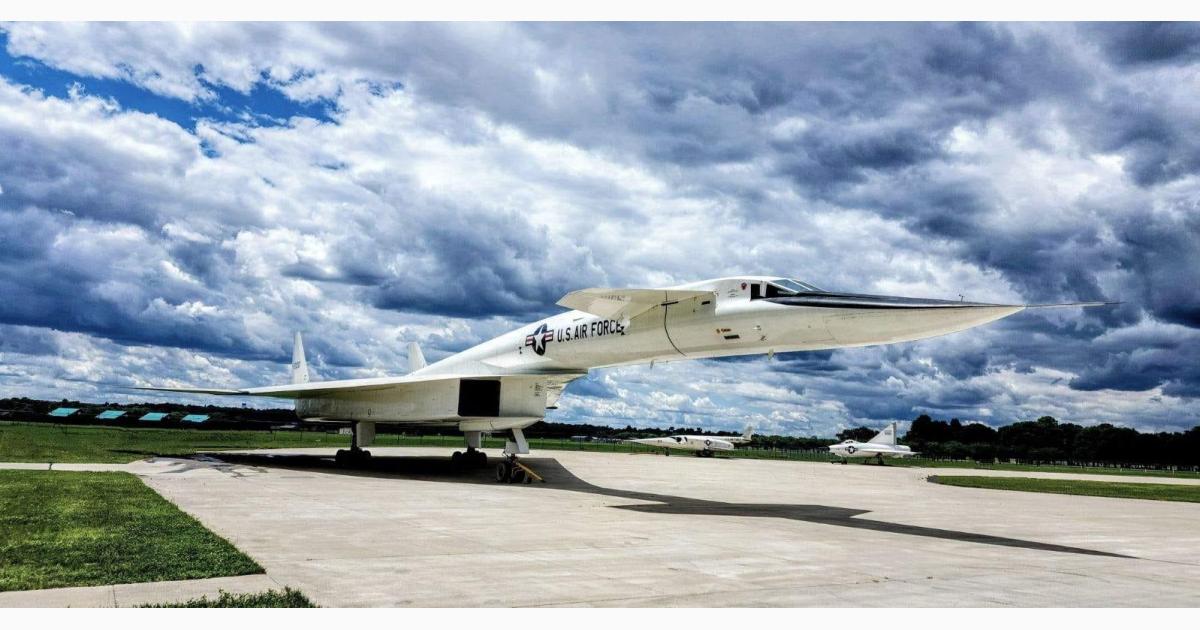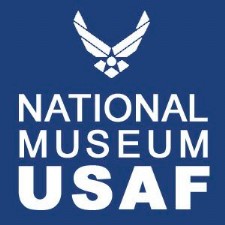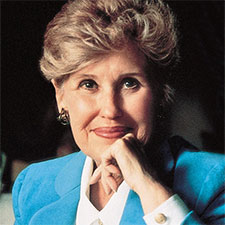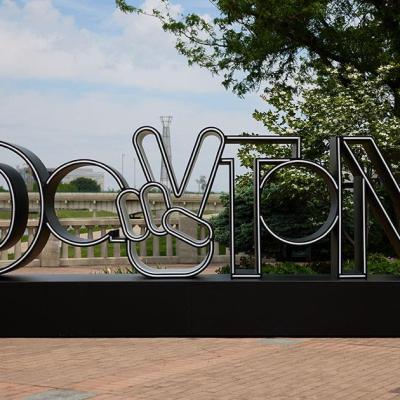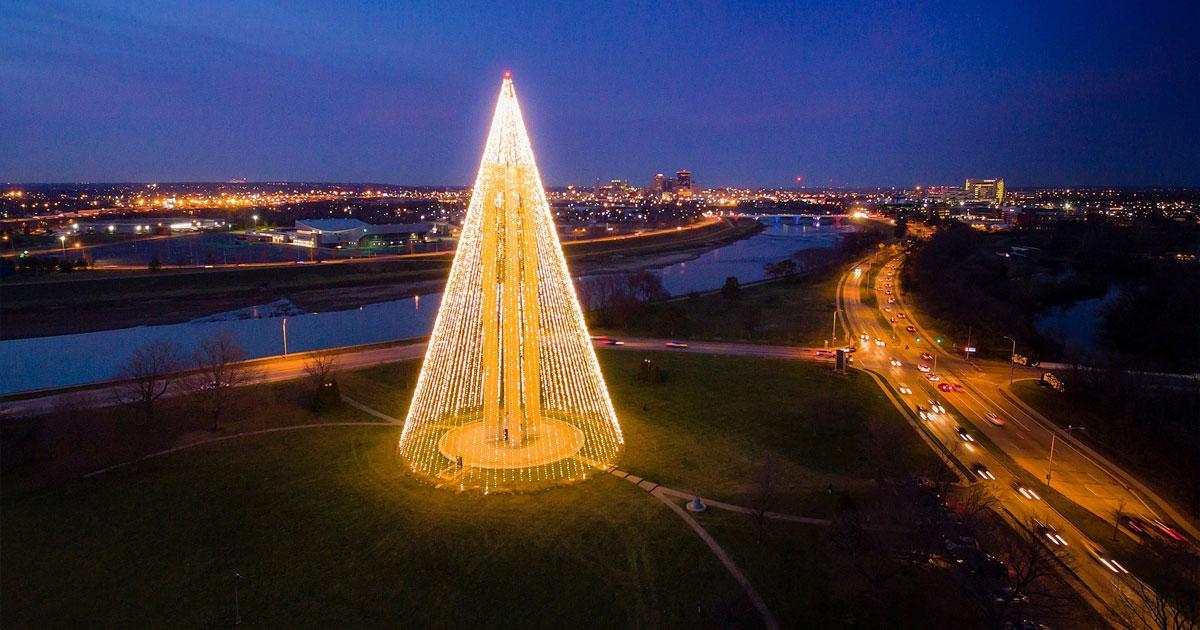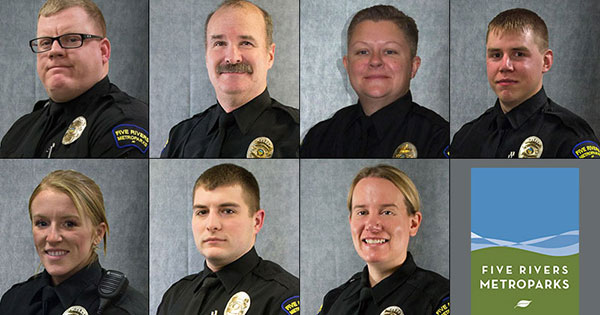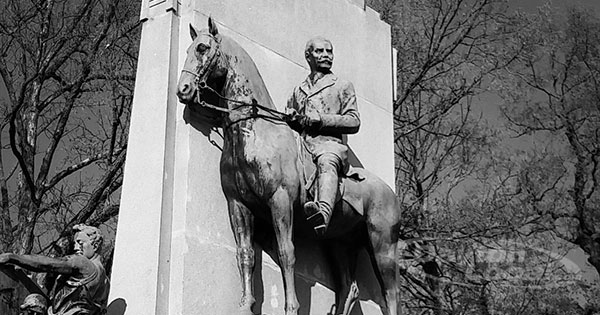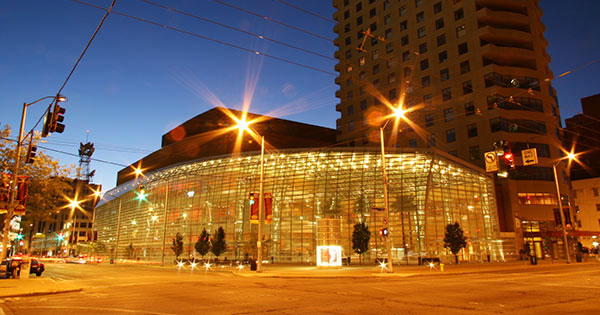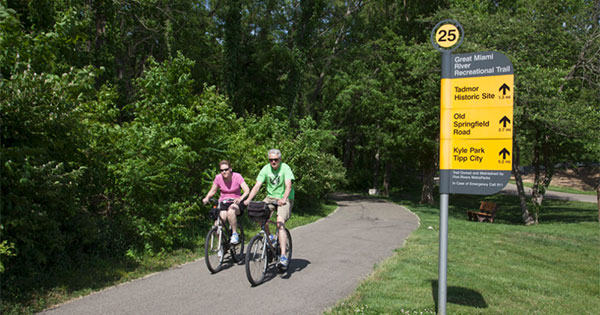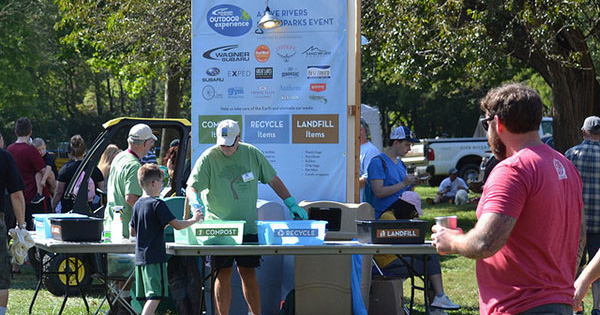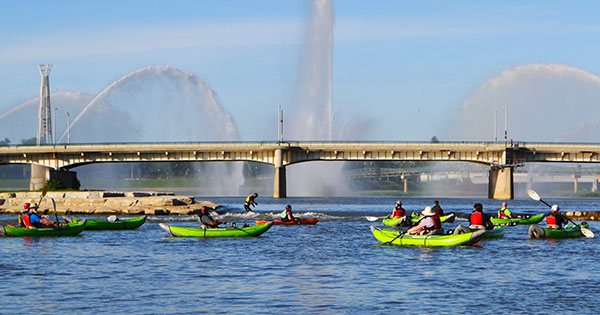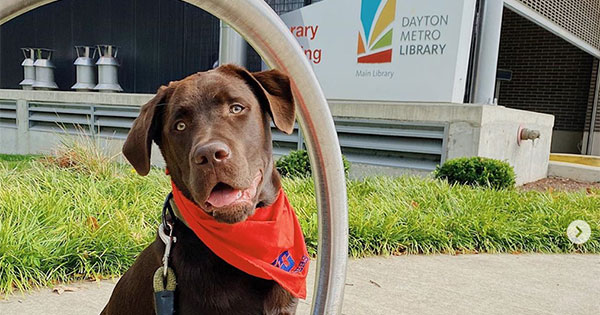North American XB-70 Valkyrie on display in Dayton
XB-70 Valkyrie: The supersonic plane faster than Concorde
Five years before Concorde’s first flight, another supersonic aircraft took to the skies. The Concorde had a maximum cruising speed of 1,350mph. The XB-70 Valkyrie could cruise at more than 2,000mph.
Did you know that right here in the United States, one of the most incredible supersonic airplanes ever built took flight? The XB-70 Valkyrie wasn't your average jet. Nicknamed "The Valkyrie" after mythical Norse maidens who chose who lived and died in battle, this aircraft was designed to soar through the skies at three times the speed of sound – that's Mach 3!
While originally conceived as a high-altitude bomber for the Strategic Air Command, the Valkyrie's legacy is one of groundbreaking research. Two prototype aircraft were constructed and flown from 1964 to 1969, serving as testbeds for pushing the boundaries of supersonic flight.
The Valkyrie's design was unlike anything seen before. Imagine a plane built with special stainless-steel panels and titanium, using shockwaves from its own supersonic speed to help it fly! This unique feature, called "compression lift," reduced drag and made the Valkyrie incredibly fast. It was powered by six massive engines with air intakes that looked like giant boxes on either side of the plane.
The first Valkyrie, numbered XB-70A (62-0001), took its maiden voyage in 1964 and achieved Mach 3 on Oct. 14, 1965. Sadly, tragedy struck in 1966 when the second Valkyrie collided with a chase plane during a research flight. Joe Walker, the F-104N pilot of the chase plane, died in the accident.
The remaining Valkyrie continued flying test missions until it was flown to the Air Force museum in Dayton, Ohio on Feb. 4, 1969. Twenty-six days later, on March 2, 1969, Concorde 001 took its first test flight, from Toulouse, France.
Though its original purpose as a bomber was abandoned, the XB-70's contributions to supersonic flight research remain invaluable. You can see the XB-70 Valkyrie on display at the National Museum of the United States Air Force.
Right: Inside the cockpit of the XB-70 Valkyrie. Scroll down for more photos.
 SPECIFICATIONS:
SPECIFICATIONS:
Manufacturer: North American Aviation
Span: 105 ft.
Length: 185 ft. 10 in. without boom; 192 ft. 2 in. with boom
Height: 30 ft. 9 in.
Weight: 534,700 lbs. loaded
Armament: None
Engines: Six General Electric YJ-93s of 30,000 lbs. thrust each (with afterburner)
Unit cost: 750,000,000–750,000,000 USD
PERFORMANCE:
Maximum speed: 2,056 mph (Mach 3.1) at 73,000 ft.
Cruising speed: 2,000 mph (Mach 3.0) at 72,000 ft.
Range: 4,288 miles
Service ceiling: 77,350 ft.
Photos: North American XB-70 Valkyrie on display in Dayton
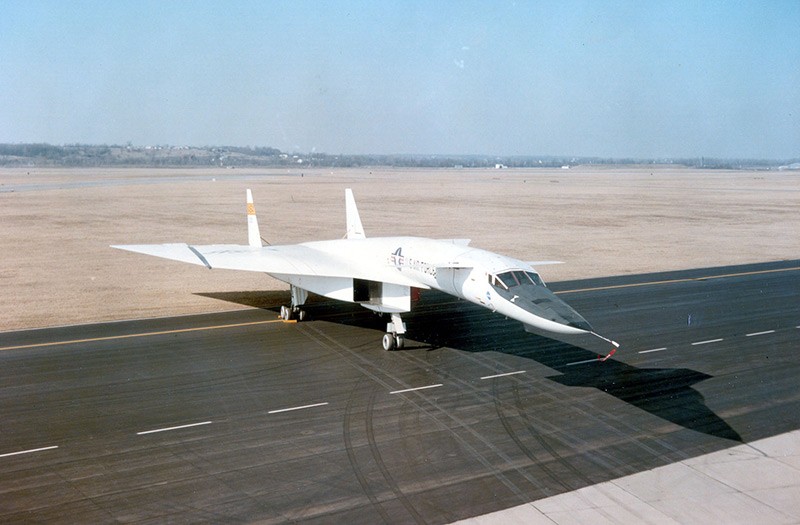
XB-70 at the National Museum of the United States Air Force in Dayton, OH
XB-70 VALKYRIE: The world's largest experimental aircraft in the 1960s.
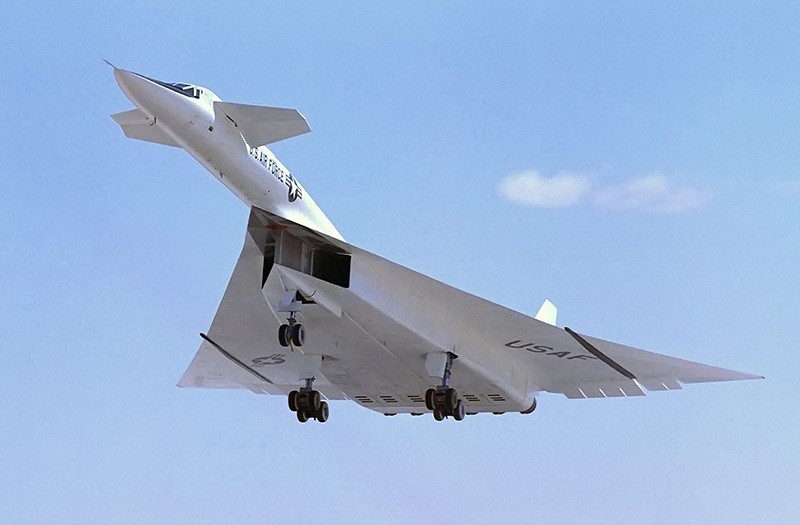
XB-70 Valkyrie in Flight
The #1 XB-70A (62-0001) is shown climbing out during take-off.
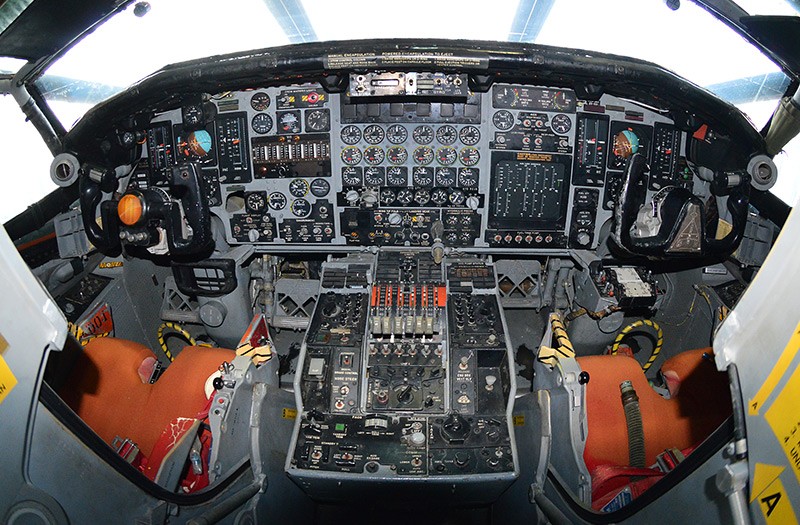
XB-70 - Inside the cockpit
XB-70 at the National Museum of the United States Air Force in Dayton
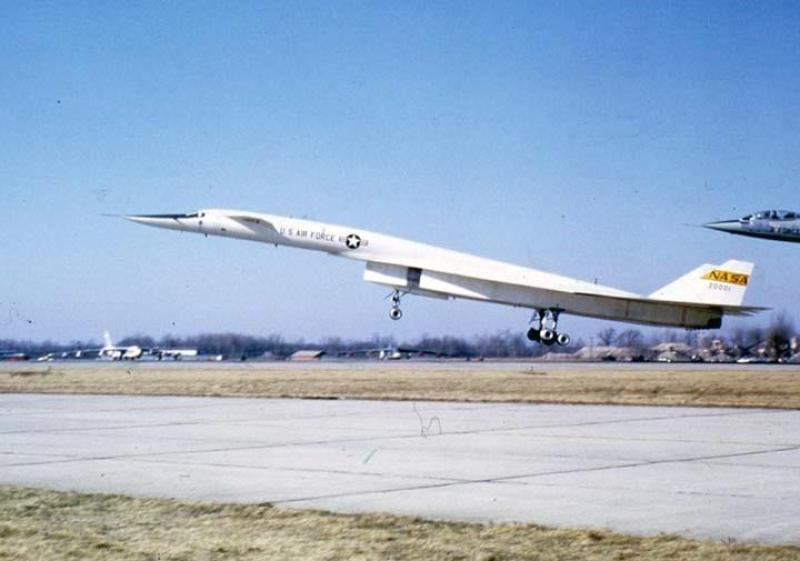
Final Flight: XB-70 Valkyrie
XB-70A AV-1 touching down for the last time at the Air Force Museum on February 4, 1969
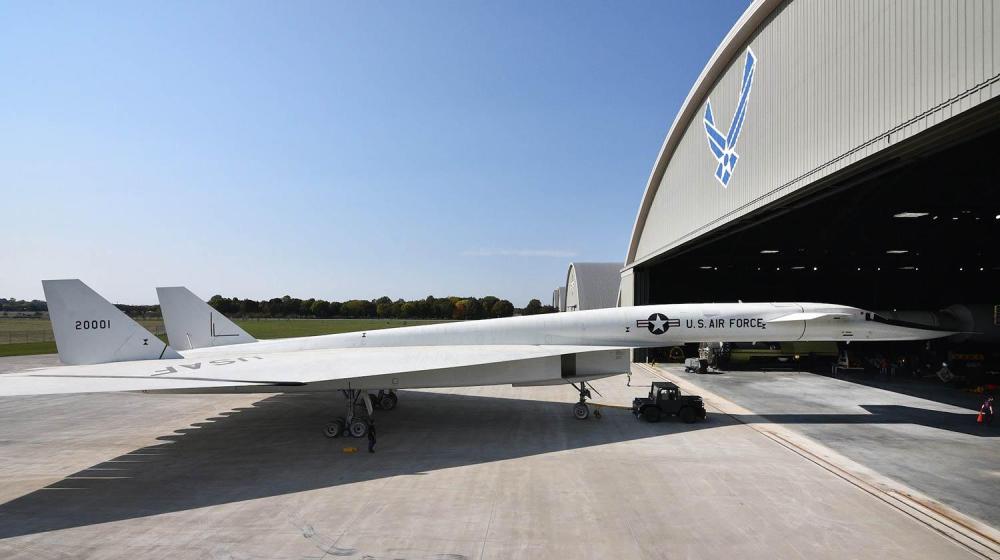
XB-70 Valkyrie during aircraft move at the museum
XB-70 Valkyrie at the National Museum of the United States Air Force during the aircraft move on Oct. 6, 2020
Links & Tags
National Museum of the U.S. Air Force.
National Museum of the U.S. Air Force - The world's largest and oldest military aviation museum, located in Dayton Ohio.


